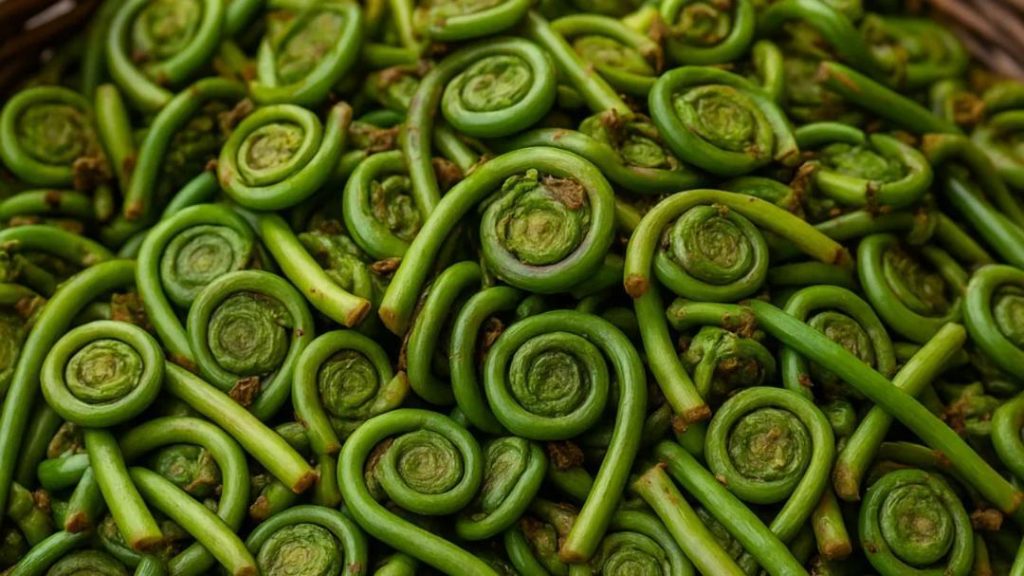
Lingad, a Monsoon Fern, Boosts Immunity and Bone Health
The Himalayas are home to a plethora of unique and exotic flora, many of which have been used for centuries in traditional medicine and cooking. One such fascinating ingredient is Lingad, also known as the fiddlehead fern, which is harvested during the monsoon season. This young, coiled shoot is not only a delicacy in Indian cuisine but also packed with nutrients and offers numerous health benefits. In this blog post, we will delve into the world of Lingad, exploring its unique flavor, rich tradition, and health benefits.
What is Lingad?
Lingad (Diplazium esculentum) is a type of fern that grows in the Himalayas and other parts of India. The young, curled shoots are harvested during the monsoon season, when they are still tender and edible. Locally, it is known as Lengdu, Dhekia, or Nigro, and is highly prized for its unique flavor and texture. The fern is typically cooked by steaming or boiling, and is often used in traditional dishes such as curries, stir-fries, and soups.
Unique Flavor and Tradition
Lingad has a distinct, earthy flavor that is often described as a cross between asparagus and spinach. It is a popular ingredient in many Indian and Nepalese dishes, and is often paired with ingredients such as garlic, ginger, and chilies. The fern is also used in traditional medicine, where it is believed to have anti-inflammatory and antibacterial properties.
In addition to its culinary uses, Lingad is also an important part of local culture and tradition. In many Himalayan villages, the harvesting and preparation of Lingad is a cherished tradition, passed down from generation to generation. The fern is often cooked and shared with family and friends, and is considered a symbol of community and togetherness.
Health Benefits
Lingad is not only a flavorful and nutritious ingredient, but also offers a range of health benefits. The fern is rich in vitamins A, C, and K, as well as minerals such as calcium, iron, and potassium. It is also a good source of antioxidants and fiber.
One of the most significant health benefits of Lingad is its ability to boost immunity. The fern contains a range of bioactive compounds, including flavonoids, phenolic acids, and saponins, which have been shown to have antimicrobial and anti-inflammatory properties. These compounds can help to protect against infections and diseases, and may also have anti-cancer properties.
In addition to its immunity-boosting properties, Lingad is also believed to be beneficial for bone health. The fern is rich in calcium and other minerals, which are essential for maintaining strong bones and preventing conditions such as osteoporosis. It is also a good source of vitamin K, which plays a critical role in bone metabolism and density.
Conservation Status
Despite its many health benefits and cultural significance, Lingad is facing threats to its survival. The fern is often harvested unsustainably, with many wild populations being over-exploited. This not only threatens the long-term availability of the fern, but also has negative impacts on the ecosystems and biodiversity of the Himalayas.
To address these concerns, conservation efforts are underway to promote sustainable harvesting and cultivation of Lingad. Organizations such as the Indian government and non-profit groups are working to establish protected areas and sustainable harvesting practices, which will help to ensure the long-term survival of this unique and valuable resource.
Conclusion
Lingad, the wild fiddlehead fern, is a fascinating ingredient that offers a range of health benefits and cultural significance. From its unique flavor and texture to its antimicrobial and anti-inflammatory properties, this fern is a true delicacy of the Himalayas. As we move forward, it is essential that we prioritize sustainable harvesting and conservation efforts to ensure the long-term availability of this valuable resource. By doing so, we can not only protect the Lingad, but also the rich cultural heritage and biodiversity of the Himalayas.






